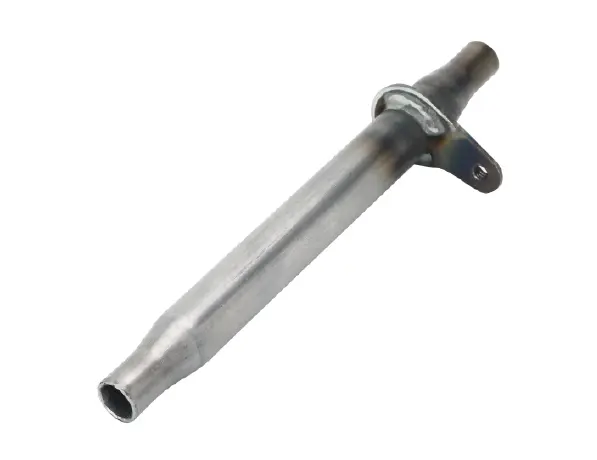auto ac parts
Nov . 24, 2024 12:44
Understanding Auto AC Parts Keeping Your Vehicle Cool
As summer sizzles and temperatures rise, the importance of a well-functioning air conditioning (AC) system in your vehicle cannot be overstated. An effective AC system ensures that you remain comfortable inside your car, protects your vehicle’s interior, and aids in defogging the windows during humid conditions. To keep your automotive air conditioning system in peak condition, understanding the various auto AC parts is essential. Let’s take a closer look at these vital components and their roles in maintaining a cool and pleasant driving experience.
1. Compressor
The compressor is often referred to as the heart of the air conditioning system. It is a pump that circulates refrigerant throughout the AC system. When you turn on the AC, the compressor compresses the refrigerant, raising its pressure and temperature before sending it to the condenser. This component is critical for creating the necessary pressure to continue the refrigerant cycle. If the compressor fails, your AC system will not function, leading to hot, uncomfortable rides.
2. Condenser
The condenser, located at the front of the vehicle, plays a crucial role in releasing the heat absorbed by the refrigerant. As the high-pressure gas from the compressor enters the condenser, it cools down and turns back into a liquid as it passes through a series of coils. This process allows the heat to dissipate outside the vehicle. A malfunctioning condenser can result in insufficient cooling, making it essential to ensure it is free of obstructions and leaks.
3. Evaporator
While the condenser cools and condenses the refrigerant, the evaporator is responsible for absorbing heat from the vehicle’s cabin. Located inside the vehicle, this component uses the low-pressure refrigerant that enters in a liquid state. As the evaporator absorbs heat from the inside air, it causes the refrigerant to evaporate, transforming it into a gas. This process cools the air that is blown into the cabin. A blocked or leaking evaporator can lead to reduced cooling efficiency and must be addressed promptly.
4. Expansion Valve
auto ac parts
The expansion valve regulates the flow of refrigerant into the evaporator. It ensures that the correct amount of refrigerant enters the evaporator based on the temperature and cooling demand. When the air conditioning system is running, the expansion valve adjusts the flow to optimize performance. A faulty expansion valve can lead to either too much or too little refrigerant entering the evaporator, leading to uneven cooling or freezing issues.
5. Receiver-Drier
The receiver-drier is a component that removes moisture and contaminants from the refrigerant. By keeping the refrigerant clean and dry, it protects the AC system from corrosion and damage. This part also acts as a storage reservoir for the refrigerant before it enters the expansion valve. If the receiver-drier becomes clogged, it can lead to pressure buildup and ultimately result in a malfunctioning AC system.
6. Blower Motor
The blower motor is responsible for circulating the cooled air from the evaporator into the vehicle's cabin. A functional blower motor ensures that the air reaches the passenger compartment effectively. If you notice weak airflow or strange noises from the AC vents, it may indicate an issue with the blower motor that needs to be addressed.
7. Refrigerant
Refrigerant is the lifeblood of your AC system. It circulates through the various components, absorbing and releasing heat to cool your vehicle. It’s important to use the manufacturer-recommended refrigerant type and quantity to ensure optimal performance. Over time, refrigerant may leak out, leading to a decline in cooling efficiency.
Conclusion
Maintaining a functional automotive air conditioning system involves understanding and caring for these key components. Regular inspections and servicing can ensure that the compressor, condenser, evaporator, expansion valve, receiver-drier, blower motor, and refrigerant remain in good working condition. Remember, a well-maintained AC system not only enhances your comfort but also contributes to a more enjoyable driving experience, particularly during hot summer days. Keeping your vehicle cool will keep you cool, and that’s the ultimate goal when you hit the road.
 Afrikaans
Afrikaans  Albanian
Albanian  Amharic
Amharic  Arabic
Arabic  Armenian
Armenian  Azerbaijani
Azerbaijani  Basque
Basque  Belarusian
Belarusian  Bengali
Bengali  Bosnian
Bosnian  Bulgarian
Bulgarian  Catalan
Catalan  Cebuano
Cebuano  Corsican
Corsican  Croatian
Croatian  Czech
Czech  Danish
Danish  Dutch
Dutch  English
English  Esperanto
Esperanto  Estonian
Estonian  Finnish
Finnish  French
French  Frisian
Frisian  Galician
Galician  Georgian
Georgian  German
German  Greek
Greek  Gujarati
Gujarati  Haitian Creole
Haitian Creole  hausa
hausa  hawaiian
hawaiian  Hebrew
Hebrew  Hindi
Hindi  Miao
Miao  Hungarian
Hungarian  Icelandic
Icelandic  igbo
igbo  Indonesian
Indonesian  irish
irish  Italian
Italian  Japanese
Japanese  Javanese
Javanese  Kannada
Kannada  kazakh
kazakh  Khmer
Khmer  Rwandese
Rwandese  Korean
Korean  Kurdish
Kurdish  Kyrgyz
Kyrgyz  Lao
Lao  Latin
Latin  Latvian
Latvian  Lithuanian
Lithuanian  Luxembourgish
Luxembourgish  Macedonian
Macedonian  Malgashi
Malgashi  Malay
Malay  Malayalam
Malayalam  Maltese
Maltese  Maori
Maori  Marathi
Marathi  Mongolian
Mongolian  Myanmar
Myanmar  Nepali
Nepali  Norwegian
Norwegian  Norwegian
Norwegian  Occitan
Occitan  Pashto
Pashto  Persian
Persian  Polish
Polish  Portuguese
Portuguese  Punjabi
Punjabi  Romanian
Romanian  Samoan
Samoan  Scottish Gaelic
Scottish Gaelic  Serbian
Serbian  Sesotho
Sesotho  Shona
Shona  Sindhi
Sindhi  Sinhala
Sinhala  Slovak
Slovak  Slovenian
Slovenian  Somali
Somali  Spanish
Spanish  Sundanese
Sundanese  Swahili
Swahili  Swedish
Swedish  Tagalog
Tagalog  Tajik
Tajik  Tamil
Tamil  Tatar
Tatar  Telugu
Telugu  Thai
Thai  Turkish
Turkish  Turkmen
Turkmen  Ukrainian
Ukrainian  Urdu
Urdu  Uighur
Uighur  Uzbek
Uzbek  Vietnamese
Vietnamese  Welsh
Welsh  Bantu
Bantu  Yiddish
Yiddish  Yoruba
Yoruba  Zulu
Zulu 












